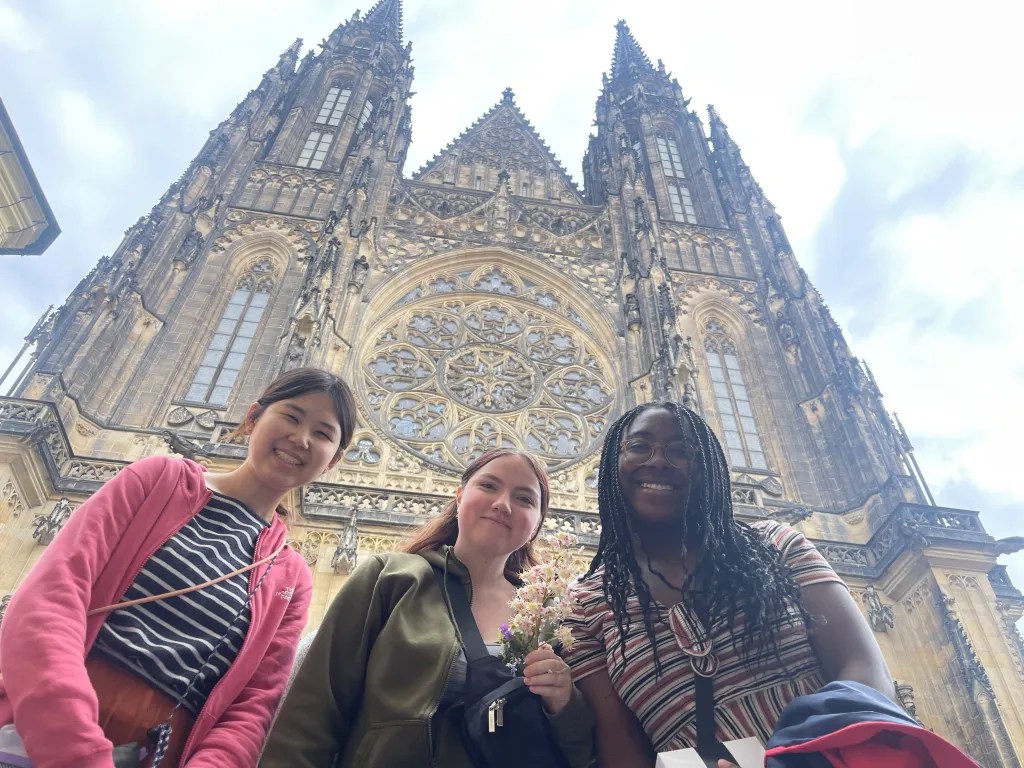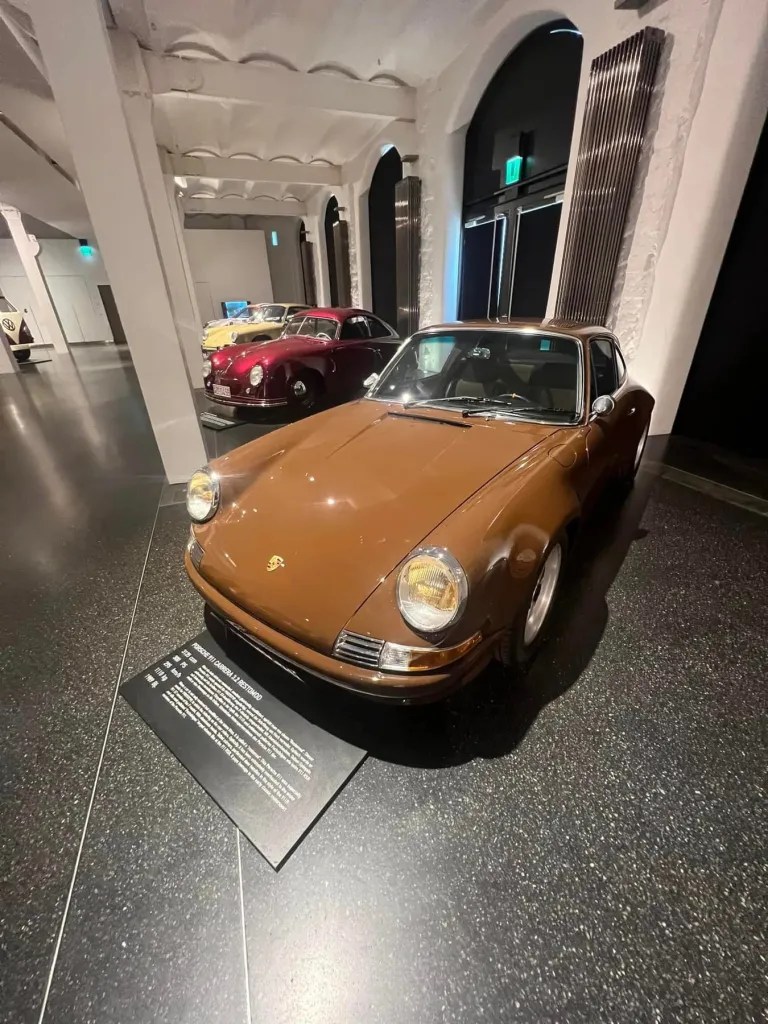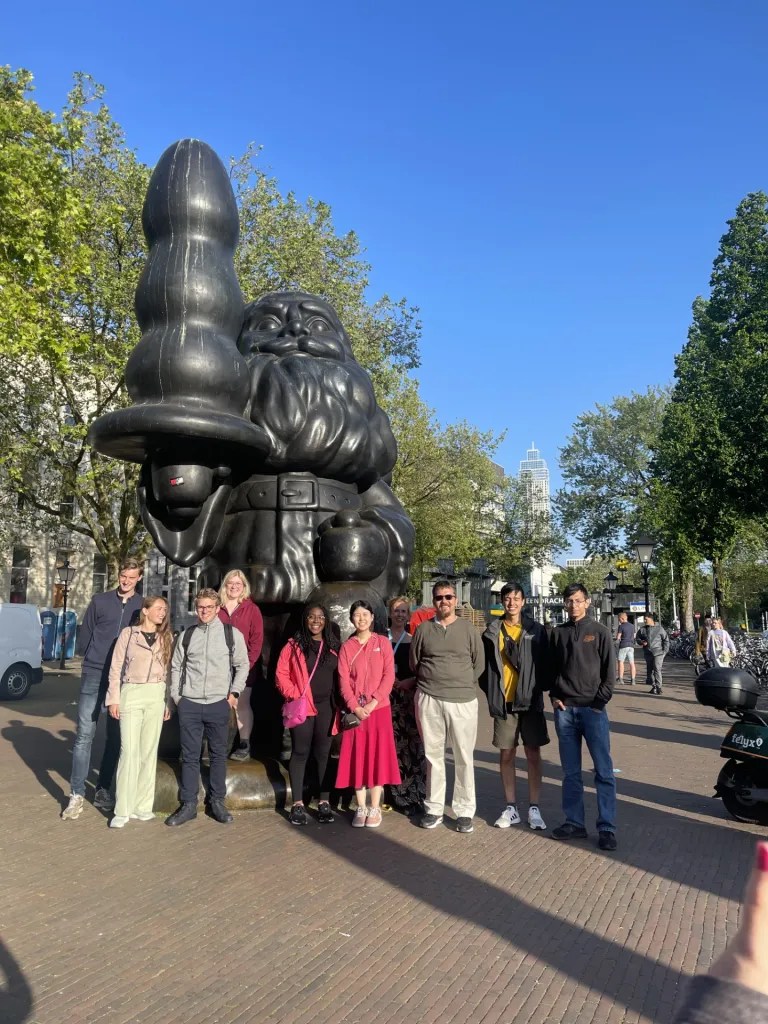
24 students attended the annual 3-credit study abroad,“Purdue Polytechnic’s Central European Multinational Automobile Organization Supply Chain experience”, in May, 2023. These students spent three days each exploring four unique Central European cities (Munich, Germany; Prague, Czech Republic; Hamburg, Germany; Rotterdam, Netherlands) that are historically important as key cogs in World War II geopolitical strategy. Not coincidentally, these cities continue to show industrial and supply chain prowess. In fact, the economy of this region is much like the Indiana economy in that it is buoyed by the automobile industry, it has central geographic supply chains near key regional markets, and it is heavily-reliant on agricultural and other commodities.
In the past, historical evidence was used to illustrate the importance of port access during the trip, but the recent war between Ukraine and Russia further exemplified the importance of ports and their access during an active war. Yet again, control of the supply chain has been crucial to the war (Iati, 2022; Reuters, 2022; Zagorodnyuk, 2022). As in WWII, this war’s strategy involves supply chains and port access, which has greatly affected the prices and availability of goods in the region and around the world (Bankova et al, 2022; Lee, 2022; Schlein, 2022).
–
The initial spirit and pedagogical rationale for this trip was first developed at Purdue in 2016 with heavy influence by Purdue’s Center for Intercultural Learning, Mentorship, Assessment, and Research (CILMAR), along with a grant by the City of Terre Haute’s Human Relations Commission. Note that in 2016, when this course description (below) was written, Hamburg was the second-largest European port by TEU throughput as denoted, whereas now it is the third-largest.
Original Trip Description (from 2016): The statewide automobile industry and its supply chain have become very important to the Indiana economy. Millions of dollars have been pouring into new multinational automobile production facilities from manufacturers such as Honda, which invested $52 million in its Indiana factory in 2016 alone (Indianapolis Star, 2016), Subaru, which invested $540 million in its Indiana factory during the past four years (Auto News, 2015), and Toyota, which has invested more than $4 billion total in its Indiana facility (Toyota Pressroom, 2015). Truly, the Hoosier economy’s health is especially affected by the global automobile industry. In fact, the number of automobile-related industrial jobs in Indiana is an astounding 459% of the national average. More than 500 automobile-related companies operate in Indiana (IEDC Automotive Council, 2016), in addition to all the companies directly or indirectly affected by the automobile supply chain in the state. As such, numerous employment opportunities are connected to the automobile industry. Even Indiana organizations that solely rely on in-state business, with no national or international operations, would benefit from a thorough understanding of the global automobile industry. With the heavy reliance of Indiana’s economy on the global automobile industry, Purdue Polytechnic students have the chance to leverage these opportunities.
The European Commission published a report in 2005 which revealed that the EU is the world’s leading automotive manufacturing region and stated that more than 1/3 of all automobiles are manufactured in Europe (Economy Watch, 2010). Central Europe in particular is notable for its history of being manufacturing intensive and stands today as the epicenter of the European automobile production and supply chain within the continent. Eight of the top twenty EU regions with the highest number of persons employed within the manufacturing sector in 2012 were in Germany (Economy Watch, 2010). Germany’s influence in the global automobile industry is not relegated to the European market, as the country boasts 110 companies operating in Indiana, with more than 12,000 employees (Indiana.gov, 2016). Many of these companies are related to automobile supply chains and all impact the Indiana economy. The German region in the EU mirrors Indiana’s geography in the US because of its central, northern location and efficient access to markets and infrastructure.
The four cities selected for this trip were chosen as venues because of their proximity, influence, and linkage to this epicenter of the European region’s automobile production. In order of visit, they are 1) Munich, Germany, 2) Prague, Czech Republic, 3) Hamburg, Germany, and 4) Rotterdam, Netherlands. These cities all have rich histories of industrial competitiveness in the international marketplace, and their economies are thriving in major part due to the global automobile industry’s impact. Tours will be conducted of successful multinational automobile facilities in two cities (BMW in Munich, and Skoda/VW in Prague), and the top two European ports in the other two cities.
As described in the course description section from the the 2016 document, experiential learning on this trip consists of:
1) Multinational Automobile and Supply Chain tours
2) Cultural Immersions
3) History of Capitalism/Trade
Students’ daily reflections from this trip can be found at jimtanoos.com under “Students’ Blog”, as well as the Facebook page “Purdue Polytechnic’s Central European Multinational Automobile Organization Supply Chain Experience.”
Over the years, some have inquired why the trip has one of the longest monikers of all Purdue University’s study abroad offerings. It is because each term is reflective to a key theme of the trip. Our 2023 experiences highlight the importance of each term in pictures, as depicted below.
“Purdue Polytechnic’s“
The spirit of this trip’s inclusiveness was based on the Polytechnic’s Mission and Research Impact statement:
Polytechnic’s mission: “The faculty, staff and students of the Purdue Polytechnic Institute strive to embrace the connection of people of diverse backgrounds, experiences and thoughts as we develop an environment that helps each of us achieve our most creative and innovative ideas and solutions. We dedicate ourselves to the hard work that must be done to improve and expand our equitable and inclusive practices as we make the Polytechnic Institute a college where everyone feels welcomed and respected, and as we build a community where excellence and achievement are attainable by all.”
Polytechnic’s research impact statement: “With a culture of interdisciplinary collaboration, risk-taking and diversity, the Purdue Polytechnic Institute’s Office of Research encourages big ideas and novel approaches.”
As such, this was an inclusive trip which invited all stakeholders, from alumni to new friends, to partake in new experiences out of our comfort zone. New excursions were added based on student feedback from the previous trips. Students represented various colleges at Purdue and also represented various Polytechnic statewide locations.
During this trip, we were reminded why America is and has been an ally to these cities for many decades. We were also reminded of America’s past, current, and future friends, from our tours of Dachau concentration camp and the Prague communist nuclear bunker, which offered stark reminders of past global trade blockades, which also amounted to cultural blockades. As such, this trip represented not only technical content but also the inclusive cultural spirit Purdue University Polytechnic embodies.

“Central European”
The four Central European cities we visited on the trip were geopolitical lynchpins during WWII. Everything we encountered during our city tours seemed to be directly related to World War II, and the uniqueness of each city’s architecture was a reminder of its involvement in the war. For example, the only city of the four whose buildings were left in tact after the war was Prague. By contrast, Rotterdam’s city center was flattened by the Germans during the Rotterdam blitz, and they decided to rebuild in a vibrantly quirky style. Most students weren’t aware that the Germans had controlled and operated the Port of Rotterdam during World War II, which gave them control over the region’s goods and supply chains. The buildings in Hamburg and Munich were destroyed by the Allies but Hamburg’s were rebuilt in a post-modern, Art Nouveau style, while Munich’s were rebuilt to exactly match its buildings’ original historic designs (Gothic, Romanesque, Renaissance,-era, and Baroque).




















–
“Multinational”
Soccer, or football as the locals call it, is of course a massive cultural phenomenon in Europe and across the globe. Due to soccer’s huge influence in Central Europe, the Munich Bayern club’s arena tour was integrated into the trip excursions.

–
“Automobile Organization”
Germany leads the EU in automobile production and has been called the world’s automotive innovation hub (Germany Trade & Invest, 2018). “The entire value chain is based in this region, including everything from research and development through production to the supply industry” City of Munich, 2022). BMW, Mercedes, Audi, and Porsche account for 80% of global sales of luxury vehicles. And with 835,000 workers, the auto industry is Germany’s biggest employer, responsible for a fifth of the country’s exports (Bloomberg, 2019). Our hotel in Munich was a block away from the Mercedes Benz tower.
The reliance and emphasis on production in the Czech Republic can be partly attributed to the country’s historic and current proximity to markets. It has one of the highest economic concentrations of GDP originating from automobile design, manufacture, and supply-chain in the world (Czech Invest, 2018). The Germans operated Skoda during WWII, and the Soviets tried to operate automobile organization operations during the Cold War, but since 1989, the economic rise of the Czech Republic has been led by the automobile industry. AIA (2019) noted, “The Czech automotive industry employs more than 150,000 people and accounts for more than 20% of both Czech manufacturing output and Czech exports.” Sadly, the full-fledged factory tours were still on hiatus due to COVID, but students still were able to see quite a bit. The automobile industry provides the country a high per-capita income compared to its European peers, similar to the way the three major Indiana-based Japanese multinational automobile organizations, Honda, Subaru, and Toyota boost Indiana’s per-capita income.













–
“Supply Chain”
The Port of Rotterdam is the largest in Europe and integral to the continent’s supply chain. It handles more cargo than any American port. In hopes of making it the smartest port on earth, Dutch leaders recently put forth a comprehensive plan called Port Vision 2030. Automation and technology in the Port are constantly being upgraded. Automated cranes usually pick up and unload containers, and only 50,000 of 19 million containers are inspected in full. Unlike most American ports, it didn’t experience any backlog of cargo during the pandemic due to its technological innovations. Interestingly, the only stoppage at the port since the pandemic occurred has been due to the manual checking of Russian containers.
Hamburg has a rich history in supply chain management. The Hamburg-America shipping line was the world’s largest trans-Atlantic supply chain organization in the beginning of the twentieth century and was known for its efficiency in operations. Hamburg is called the “Gateway to the World” by German citizens because of the vast trade volume facilitated by the port, including more than 9.73 million TEUs which pass through it annually. The city has 2,500 bridges (second only to New York), many of which connect portions of the Port to the City. As in Prague, Hamburg’s supply chain strengths have been susceptible to political change and turbulence, as the availability and access to German ports by global merchants such as the port of Hamburg have been integral to the economy of the country.
Reflecting the likelihood that a product will go through intermodal transportation from its production to its end-usage, we learned and/or utilized many modes of transportation during the trip. Our movements from place to place were constantly facilitated by various supply chain modes.























–
“experience”
Study abroads provide the best experiential learning opportunities (Hopkins, 1999), and experiential learning is a key indicator of career success (Tiessen et al., 2018). While modern study abroads integrate experiential learning into the curriculum via assignments related to course excursions, oftentimes the most relevant experiential learning occurs outside of structured, required course activities. In fact, the most memorable experiences on SAs are usually those that are self-initiated, as these side-trips and the memories they make tend to be the most special. Especially during these self-initiated experiences, students learn more about America on this trip than any country we visit because they see what makes us unique and different. While each student has their own version of these explorations, each student made their own unique memories in Central Europe, thanks to Purdue University.




























–
